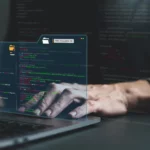The developers behind the highly anticipated life simulation game InZoi have pledged to strengthen their internal review processes after players discovered a shocking bug that allowed virtual children to be run over and killed by vehicles. This grim revelation has sparked intense debate about content moderation in increasingly realistic virtual worlds, forcing the studio to confront unintended consequences of their ambitious physics systems.
When Simulation Crosses an Unthinkable Line
InZoi, often described as a next-generation competitor to The Sims franchise, promises unprecedented realism in its virtual world. However, that realism took a dark turn when players discovered vehicles could interact with child characters in horrifying ways never intended by developers. Videos circulating online showed player-controlled cars striking child NPCs, resulting in graphic animations and permanent removal of the characters from the game world.
Developer Krafton quickly issued a statement condemning these unintended outcomes: “These depictions are highly inappropriate and do not reflect the intent and values of InZoi. We are taking immediate action to address this issue and prevent similar occurrences as we move toward launch.
Behind the Bug: How the System Failed
Industry experts analyzing the incident suggest this wasn’t a case of deliberate child violence programming, but rather a catastrophic failure in interaction flags. InZoi’s advanced physics engine appears to have treated all characters uniformly for collision purposes, without proper exceptions for vulnerable NPC types. The game’s much-touted “realistic consequences” system then compounded the issue by making these interactions permanent.
This represents a critical oversight in ethical game design,” explained Dr. Lina Park, a professor of virtual world ethics at Stanford University. “When you create systems that simulate real-world cause and effect, you must build in safeguards against harmful emergent behaviors. The more realistic your simulation, the greater your responsibility to prevent realistic harms.”

Krafton’s Three-Point Response Plan
Facing mounting criticism, the InZoi development team outlined concrete steps to regain player trust:
- Immediate Content Review: A complete audit of all character interaction systems, with special attention to vulnerable NPC groups
- New Ethical Design Protocols: Implementation of formal review checkpoints specifically addressing potential harmful emergent gameplay
- Community Transparency: Regular developer updates about safety measures and content moderation approaches
The studio has already deployed a hotfix disabling all vehicle-child interactions while a permanent solution is developed. Early tests suggest this will involve both technical fixes (separate collision layers for child NPCs) and design changes (non-lethal outcomes for any violent interactions with children).
The Broader Implications for Life Simulation Games
This incident arrives during a pivotal moment for the life simulation genre. As games grow more sophisticated in modeling human behavior and consequences, developers face new ethical dilemmas about where to draw lines in virtual worlds.
Recent controversies in other titles have included:
- AI-driven NPCs developing inappropriate relationships with players
- Economic systems accidentally encouraging exploitative behaviors
- Character customization options permitting harmful stereotypes
In many ways, we’re seeing the growing pains of a genre that’s becoming too realistic for its own good,” noted games journalist Marcus Bell. “What was harmless abstraction in pixelated Sims becomes deeply unsettling when rendered with near-photorealistic graphics and physics.”
Player Reactions and Community Response
The InZoi community has responded with mixed emotions. While most applaud the developers’ quick response, some express concern about potential overcorrection limiting gameplay freedom.
I appreciate them fixing something clearly wrong, but I hope this doesn’t lead to sanitizing all the edge cases that make life sims interesting,” commented longtime genre fan Tessa Nguyen on the game’s Discord channel. Others argue the very fact this bug made it through testing suggests deeper issues with development priorities.
Content creators who initially showcased the bug have largely complied with requests to remove disturbing footage, though some analysis videos remain as part of broader discussions about game ethics.
Industry-Wide Reckoning on Virtual Harm
The InZoi situation reflects broader conversations happening across the game development landscape. Recent advancements in AI, physics simulation, and procedural content generation have created new categories of ethical challenges that existing content rating systems never anticipated.
Several industry groups are now calling for:
- Updated content rating criteria addressing emergent behaviors
- Standardized ethical review processes for simulation games
- Better tools for developers to detect problematic system interactions
This isn’t just about one bug in one game,” emphasized International Game Developers Association representative David Chen. “We’re seeing pattern recognition of how advanced simulation systems can create unanticipated harms. The entire industry needs to develop best practices for responsible world-building.
InZoi’s Path to Redemption
With InZoi still in development, Krafton has an opportunity to turn this incident into a case study for ethical game design. The studio’s response in coming weeks will be closely watched as a potential model for handling similar situations.
Upcoming challenges include:
- Rebuilding player trust without compromising ambitious design goals
- Implementing robust safeguards without creating an overly restrictive experience
- Communicating clearly about content boundaries ahead of launch
As the gaming world grows increasingly sophisticated in its simulations, the InZoi team now finds itself at the forefront of a crucial conversation about responsibility in virtual spaces—one that may ultimately shape the future of life simulation games for years to come.
For now, the developers’ prompt acknowledgment and commitment to change suggests they understand the gravity of the situation. How they follow through may determine whether this incident becomes a footnote in InZoi’s history or a defining moment in how the games industry approaches ethical simulation design.
















Add Comment